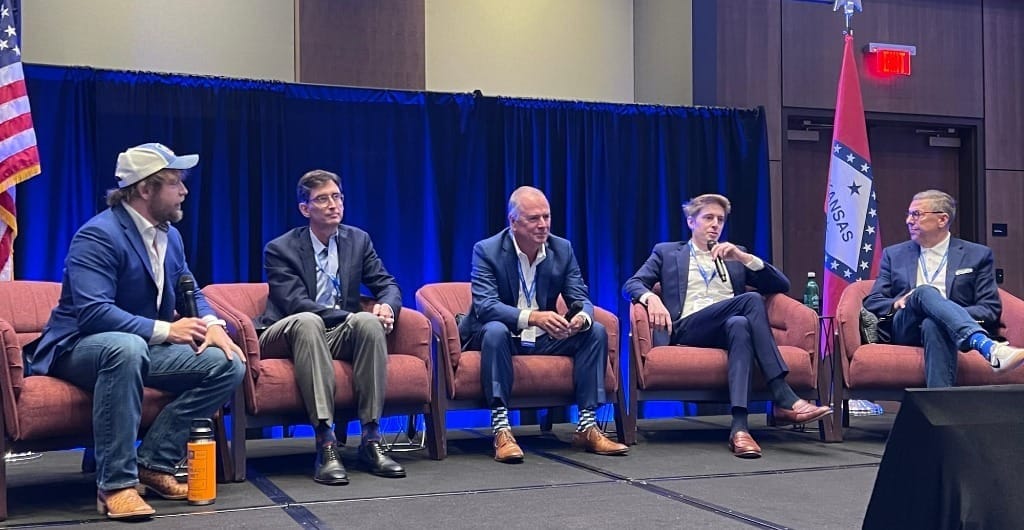
Arkansas
ISPs should use state broadband coverage maps and financial forecasting to create BEAD plans.

 From left: Jase Wilson, Co-Founder & CEO of Ready.net; Jon Wilkins, Co-Founder of Quadra Partners; Jake Lawrence, Co-Founder & CFO of Amperage; Mac Keers, Senior Vice President of TAP Advisors; Len Pitcock, Vice President of Cox Communications. Photo by Drew Clark
From left: Jase Wilson, Co-Founder & CEO of Ready.net; Jon Wilkins, Co-Founder of Quadra Partners; Jake Lawrence, Co-Founder & CFO of Amperage; Mac Keers, Senior Vice President of TAP Advisors; Len Pitcock, Vice President of Cox Communications. Photo by Drew Clark
HOT SPRINGS, Ark., June 26, 2024 – Internet service providers should develop a detailed Broadband Equity, Access and Development plan that integrates financial forecasting, community engagement, and strategic expansion from existing networks, suggested experts at an Arkansas Broadband Summit on Tuesday.
BEAD plans should include forming a dedicated planning team, accurately assessing build costs, ensuring availability of working capital, studying other BEAD projects, and maintaining a long term view of business growth and sustainability.
Jon Wilkins, co-founder of Quadra Partners, brought up key questions for internet providers to ask themselves. “Ask, what are my build costs? What is my BEAD net build cost? How does that relate to my total project economics?”
He added that providers should think “about capital availability. You are going to have to have working capital to finance part of your building.”
Wilkins additionally stressed the importance of analyzing other state maps and BEAD projects and using them to find new opportunities. “It is a very, very detailed process. You really have to know them now and understand the map.”
“It’s really important that we find providers that are in the community that have been established many times, at 41 grants, because then it points to that they have the financials and support from the state level”, said Amperage Co-Founder and Chief Financial Officer Jack Lawrence, when asked what he looks for when funding providers. He recommended “extending out from your existing network and having the funds available to expand and reach more homes.”
The BEAD program, created by the Infrastructure Investment and Jobs Act of 2021, allocates $42.5 billion among states and territories to fund broadband expansion in areas that lack adequate connectivity.
Eligible uses of these funds include deploying or upgrading broadband network facilities for unserved or underserved projects, improving service to eligible community anchor institutions, conducting necessary data collection and broadband mapping and supporting other approved digital equity programs.
Each state needs an approved five year action plan before it can obtain its BEAD grant. The National Telecommunications and Information Administration requires states to outline goals for broadband access, affordability, equity, and adoption, including listing existing programs, funding sources, and efforts to close the digital divide. Plans must outline staff plans, identify obstacles, provide an asset inventory, describe community engagement, incorporate data, and identify service gaps.

